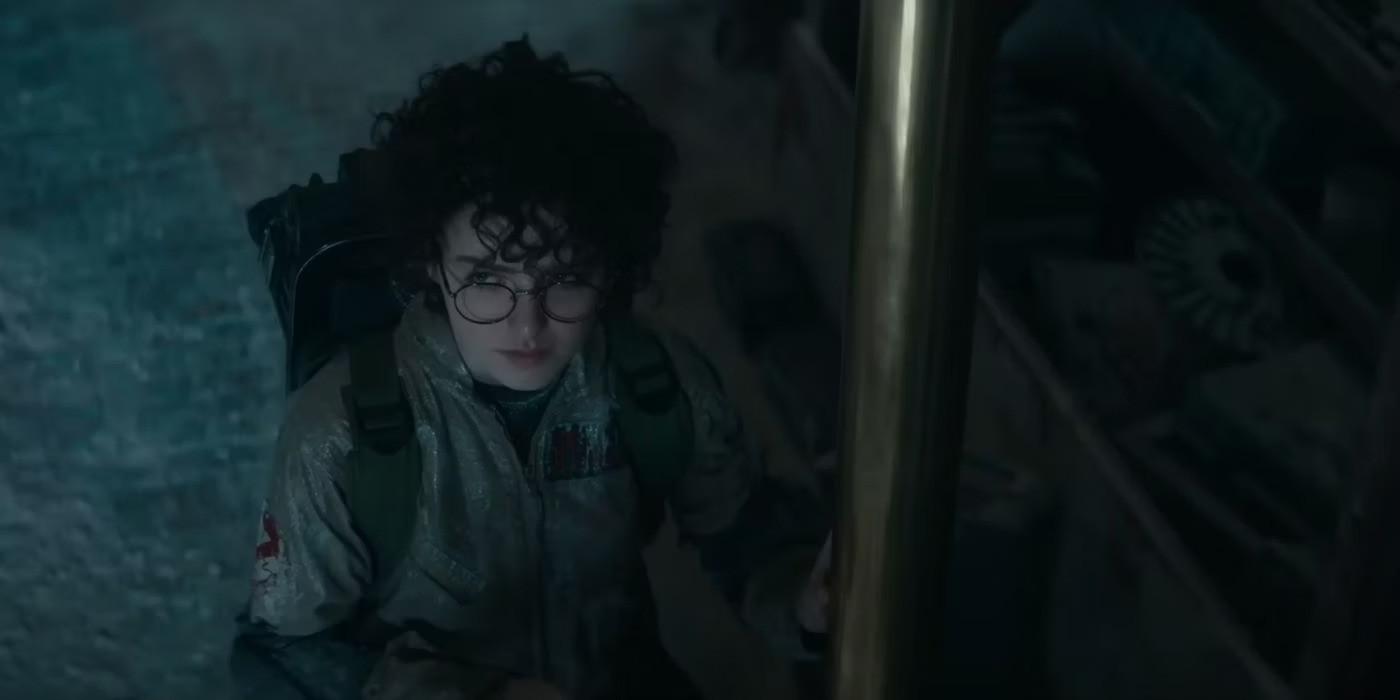There’s a line from Ghostbusters: Afterlife (2021) when Annie Potts’s Janine greets Carrie Coon’s Callie Spengler, Callie asks if the house she inherited from her father (Harrold Ramis’s Egon) is completely worthless. Janine responds, “You mean, aside from the sentimental value?” The quote feels pertinent when considering how evolved (or de-evolved) Ghostbusters has been since 1984. For decades, creatives — from Ivan Reitman, Harrold Ramis, Dan Aykroyd, Amy Pascal, Jason Reitman, and more — have tried to manifest something new from the classic film. Audiences grew up with Ghostbusters to the point where it has become a focal footprint of 80s cultural nostalgia.
“Nostalgia” is the keyword for this franchise, as the sentimental value has only increased after the passing of Ramis and Ivan Reitman. There’s a gnawing sense that the classic Ghostbusters have a finite amount of time, and there needs to be a new group of characters to take on the mantle and continue bustin’ ghosts.
In introducing Phoebe Spengler (Mckenna Grace), her brother, Trevor (Finn Wolfhard), and their mom, Callie, Afterlife mildly achieved such an endeavor. The characters serve as extensions of Ramis’s Egon both to keep the familial ties going and to pay respect to Ramis. The experiment was successful enough to mend the gap between the disaffected fans who made the all-female reboot, Ghostbusters (2016), a misaligned political football and the younger fans who gravitated to the kid-friendly qualities that made the franchise feel more Spielberg than cynical. It worked!
Afterlife brought closure to Egon by having his family —plus a charming Gary (Paul Rudd)—taking on the Ghostbusters mantle after the original cast came in at the last second to bust ghosts one last time. It felt like a step in the right direction; Reitman and Sony can now move this franchise forward into new, unexplored heights.
Sadly, we’re now going two steps back.
Gil Kenan’s Ghostbusters: Frozen Empire (2024) may have a new villain and bring along new characters, but the sequel still suffers from separating itself from the original film. Jokes are sporadic, with humor shifting from sardonic one-liners to literal Despicable Me Minions in the form of the mini-Stay-Puff Marshmallow meant to appeal to children. Bill Murray looks half-bored as if he is eyeing the paycheck off-camera while he does his cynical, smarmy schtick devoid of genuine humor. And when the film tries to find any funny bones it devolves into pointless nostalgia bait to remind fans and newcomers of how great the original film is (Remember Slimer? Remember the Ghost Librarian? Remember Walter Peck?)
The family is now uprooted from the barren small town of Oklahoma to the mainstay of New York, where they manage the old Firehouse headquarters and are on routine calls to bust ghosts. The makeshift family— including Rudd’s Gary — has adjusted to their new life quite well, as they bicker and debate like a regular family while chasing ghosts throughout New York City. All of that comes to a halt, though, after Phoebe is benched due to Mayor Walter Peck’s (William Atherton reprising his role) child labor laws. As the family cruises the city on their ghost adventures, Phoebe must find purpose as a stay-at-home brainchild.
Meanwhile, Ray (Dan Aykroyd) encounters an ancient orb that may be possessed by a powerful god entity, handed off by a slacker loser type in Nadeem (Kumail Nanjiani). The orb soon breeds a new kind of evil that could encase the city (and the world) in a new ice age. Ray’s old friend and colleague, Dr. Winston (Ernie Hudson), a rich philanthropist who has heavily invested in a new Ghostbusters base to house ghosts and work on new tech, comes to assist with Spengler’s mission. All this expository information is dumped by Lars (James Acaster), a fun, nerdy addition to the ensemble of Ghostbusters.

The plot could be more inventive if new ideas and concepts were better explored. One such idea is Phoebe’s encounters with a lost ghost girl, Melody (Emily Alyn Lind). She is friendly enough to play chess with, but she also has ulterior motives for befriending Phoebe. Grace showcases a lot of warmth and acceptance to Melody, proving why her performance is the best aspect of both films. Her performance calls to the tech-wiz smarts of Egon mixed with the innocence of a young child feeling especially distanced from the family’s ghost-hunting ventures. Her friendship with Melody is born out of that isolation, bringing into question that not all ghosts are as malicious as the films have painted them. Perhaps there are still some good beings left to roam the earth with unresolved issues.
But is the film interested in that concept? Hardly. Phoebe is given mild scraps of development while the rest of the cast is left to fend for themselves. Trevor’s biggest arc is being allowed to drive the Ecto-1. Callie and Gary’s conflict is how to approach parenting Phoebe with Gary stepping into a father role. Rudd is effortlessly charming, and despite the script’s weak attempt to instill some depth, his performance shines where the writing fails him. Coon is such a gifted actress, so to see her left to the sidelines is disheartening. The tired mom cliché is worn out, and one would hope that Callie stepping into her father’s role would bring with it dramatic growth from a financially stressed single mother to an adventure-seeker. Yet she remains the same unenthused mom from Afterlife.
Some of the original cast receive new growth, as Winston urges Ray to enjoy their golden years instead of endangering themselves in ghost encounters far more powerful than they’re capable of handling. Aykroyd and Hudson are great in their few, brief scenes, showcasing the classic icons as more vulnerable to their aging selves. It’s here the earnest development intersects with our fondness of Ghostbusters allowing this brand to grow and mature. If only for a few minutes.
Kenan follows the steps of Reitman’s flare for action, as the opening chase sequence is the most fully realized version of this new ghost-bustin’ team in action. The special effects aren’t wholly convincing all the time, and perhaps that’s trying to feel in line with the shoddy ghost effects of the original. Still, it’s glaringly abysmal when the characters confront the villain ice god known as Garraka, AKA a tall, cheaply rendered CGI creation devoid of color and personality. The ice effects are a welcome addition, but this film won’t astound anyone. There’s no bold direction being taken, ultimately rendering the villain as ineffectual. The narrative doesn’t attempt to be anything but a traditional Ghostbusters plot: jokes are said, scary ghost imagery gives the film a slight edge, and actors can be as wacky and zany as their heart desires.
Audiences may notice in the beginning that once the Sony and Columbia Pictures logos play, a new logo comes into the frame titled “Ghostcorps.” This production company, formed in 2015 by Aykroyd and Ivan Reitman to oversee all Ghostbusters film and media titles, is what jumpstarted the Paul Feig debacle, but it also now oversees the current timeline of films. There’s no denying Sony is adamant about mining every single dollar it possibly can from the brand, yet one must ask what could be gained from this treasure chest of fortunes as Jason Reitman and company continue to keep one foot in the past.
The only way for this franchise to cultivate a new audience and widen its grasp is to tackle bold ideas, move the characters forward, and leave the beloved characters behind. With Ramis and Ivan Reitman gone, time slowly ticks away for the remaining creatives of the original films. Can Ghostbusters survive without them? Can it sustain itself with its new cast of proton pack-wielding busters? For the benefit of this series and to respect audiences that have had their fill of the originals, it’s time for Ghostbusters to graduate into a new identity. If not, I fear it will slowly slip into that deep sleep of dead, unsalvageable franchises.
Review Courtesy of Amritpal Rai
Feature Image Credit to Sony via The Hollywood Reporter

Recent Comments